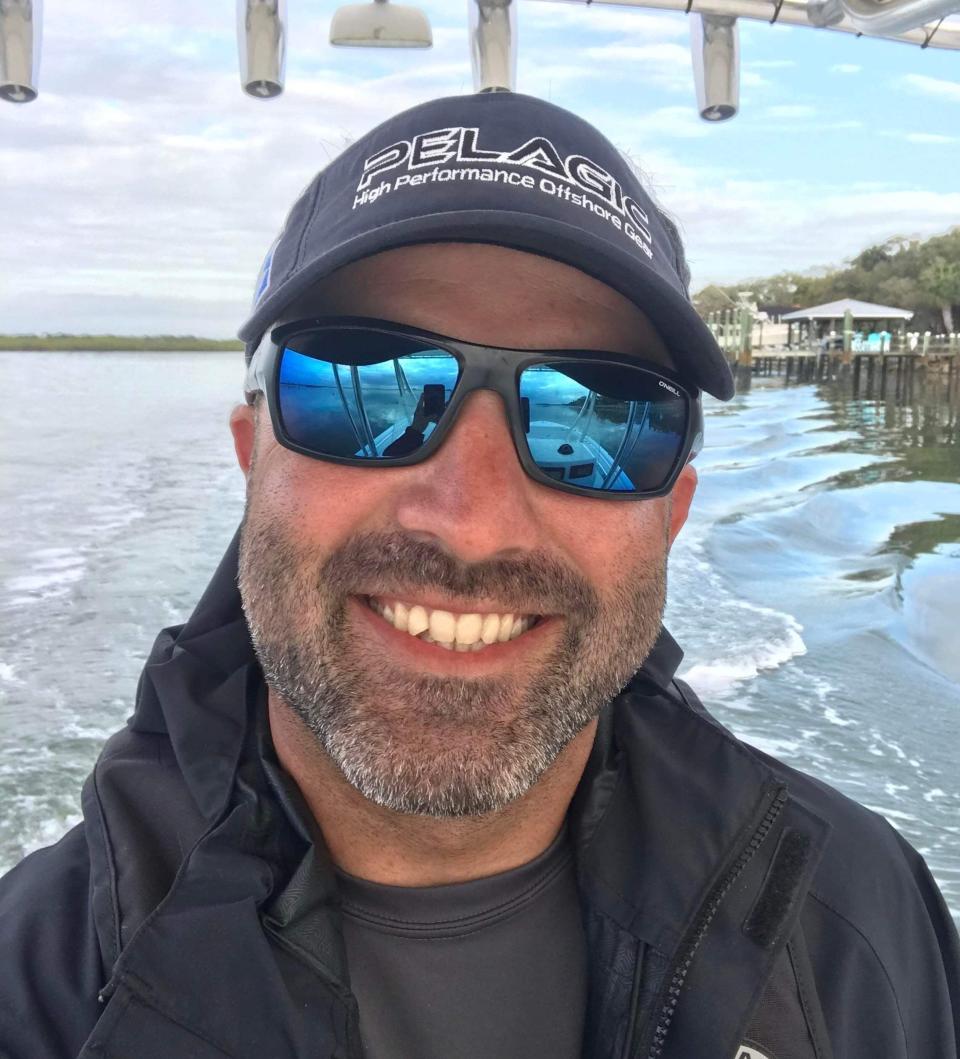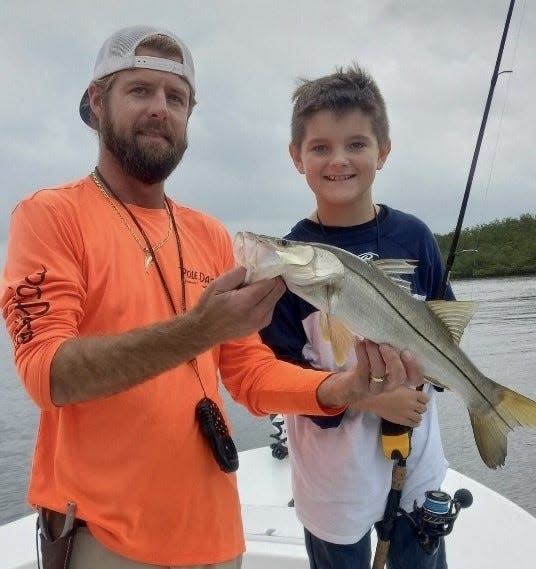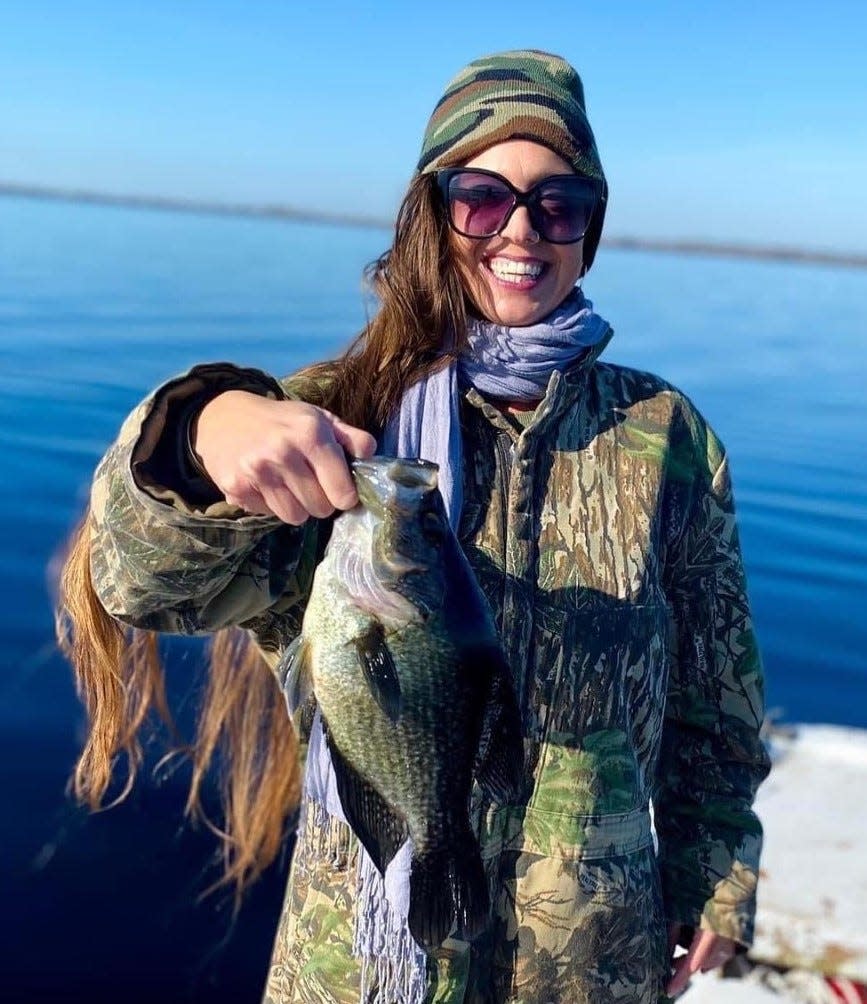Hurricane Nicole's sliver of good news: Salinity levels are up in river | FISHING REPORT
Sometimes you have to look long and hard, but no matter the natural devastation, you can always find a beneficiary.
It might be an extended period of assessment and cleanup for many around here, but for Mr. Shrimp, it’s party time. He can “breathe” again.
After weeks of gagging on too-fresh water, brought on by Hurricane Ian’s deluge, Nicole’s storm surge shoved wave upon wave of saltwater into the intracoastal and returned salinity levels to livable standards for many river dwellers — you know, not unlike that bump you give the thermostat when visiting grandma’s house.
Salinity is measured in parts-per-thousand — how many grams of salt per kilogram of seawater, with pure ocean water measuring 35 ppt.
“The only silver lining Nicole left behind is the influx of saltwater from the tidal surge,” says Craig Patterson, who owns and operates Donald’s Bait & Tackle on the Port Orange Causeway. “Ian's massive rainfall salinity levels were a dismal 6 ppt.
“Low levels can negatively affect oysters, clams and submerged vegetation as well as other marine life. We had to add purified salt to our bait tanks for weeks to match the salinity of our bait vendors. Levels after Nicole's surge are back at the average of 24 to 26 parts per thousand.”
YOUR BAIT STINKS!: What's that smell? Maybe it should be your bait
FLIPPER AIN'T DUMB: A dolphin might take the bait, but not the hook; encounters rare
Feel better? Probably not, but it’s basically all we’ve got.
Salinity levels are up, which should make for some active fishing, but if you’re out and about on the waterways, don’t daydream at the helm. Along with taking gouges out of the shoreline, Nicole left a trail of debris, and your Evinrude’s life — or at least its lower unit — may depend on your ability to avoid landmines.
“A lot of partially submerged crab traps shifted into the middle of the channel, and with the water levels being so high, at high tide they can be very hard to see,” says Capt. Charlie Beardsley, a member of the New Smyrna Beach Coast Guard Auxiliary. “There’s potential for them getting tangled in the motor and fouling a prop.”

Midweek, Capt. Charlie was seeing a lot of floating dock planks — two-by-fours and larger.
“Also, many small tree limbs and a good amount of trash,” he says. “Many docks were damaged as well, like the Ponce Inlet boat ramp dock, and major damage to marinas such as Adventure Yacht Harbor.”
Halifax/Indian River: It's sheepshead time!
Plenty of locals are big on sheepshead for two reasons equally important to many anglers: They’re a challenge to catch, and their taste is worth that challenge.
Once the temps start dipping, the sheepshead get itchy and hungry.
“With the cold snaps come the sheepshead feeding frenzy,” Craig Patterson says. “Fiddlers by the thousand are in high demand. Docks and pilings are producing great catches.”
If you can get away from the docks and bridges and into the backwaters, you can also find them.

“The fishing has been good, with sheepshead and black drum on the deep oyster bars — use fresh-dead and live shrimp,” says Capt. Billy Pettigrew (RedfishTails.com). “Lots of ladyfish and jacks along with tarpon around the restaurants near Ponce Inlet.”
Capt. Billy confirms the river’s debris field but says, “just keep your eyes on the water when traveling and you'll be good.”
While also acknowledging the need to pay attention when cruising, Capt. Jeff Patterson (Pole Dancer charter) says the quality fishing has made his handful of trips worthwhile.
“Slot and over-slot redfish along with some nice snook at the inlet,” he says. “There’s been some black drum there and they seem pretty thick around all the bridges. Big schools of jacks and pretty big bluefish have been throughout the river.
“I’ve been doing really well with finger mullet. I’ve been seeing a bunch of them, especially at the beginning of outgoing tide.”
Upriver, two longtime favorites — Granada Pier Bait Shop and The Fishin’ Hole — closed briefly for cleanup but quickly went back to work.
Ike Leary, at Granada, expects the colder weather to start bringing black drum to the planks of his pier out back. Gene Lytwyn, at the Fishin’ Hole, was closed from Wednesday to Saturday of Nicole week. In the aftermath, some of his regulars are on the hunt for new places to fish, given the condition of too many docks and the beach.
“This is going to take a long time to fix,” Gene says.
Flagler County: Consistently inconsistent
Water levels and clarity have been all over the place, says Capt. Mike Vickers of Hammock Beach Bait & Tackle in Palm Coast.
“This, coupled with high water, has made the fishing rough, to say the least,” he says.
The Matanzas Inlet, normally an angling hot spot, has been hit by a racing current.
“The fast-flowing water has made the inlet extremely hard to fish,” Capt. Mike says.
But he, too, has found some better news.
“The ray of sunshine has been the canals, flats, and creeks,” he says. “With the high water, the bait has been pushed up into the woods and grass, and those getting way in the back have been reporting fair catches of reds, trout, flounder, lady fish, mangrove snapper, drum, and sheepshead.”
He says the best fishing has been on outgoing tides. On the incoming, things have been shutting down — “with the exception of catfish and some blues,” he says.
And surf-fishing? Good luck.
“The beaches took a pounding and most access points are closed,” Capt. Mike says. “The few areas where you can access the beach, you can expect dirty water and strong currents.
“The bright spot has been the northern end of Flagler Beach through Marineland, where we’ve gotten reports of some whiting, reds, and drum.”
St. Johns: Highland Park still open, speckled perch biting hard
Raised water levels have made nearly all of the St. Johns a no-fly zone for boaters.
Nearly all, but not all.
“We’re trying to get the word out that we’re open,” says Capt. Bryn Adams at DeLand’s Highland Park Fish Camp. “Our boat ramp is open and we are unrestricted. With so many ramps closed, people need an outlet and we welcome them.”

Highland Park has the built-in advantage of being surrounded by a wildlife refuge, so boaters can operate their crafts without fear of damaging neighboring homes.
And those getting out there are enjoying the ongoing speck season.
“We’re seeing lots of specks come in,” Capt. Bryn says. “They’re catching them in Lake Woodruff, trolling with jigs.”
Also: "Merry Fishmas"
It’s almost “Merry Fishmas” time for the Halifax Sport Fishing Club, which will host its annual kids fishing outing Dec. 11 at the club.
Kids age 5-15 will visit five learning stations to learn everything from local regulations to knot-tying. Better yet, it’s free.
More info: HSFC.com.
This article originally appeared on The Daytona Beach News-Journal: Hurricane Nicole's rare good news: Shrimp love new salinity levels!
